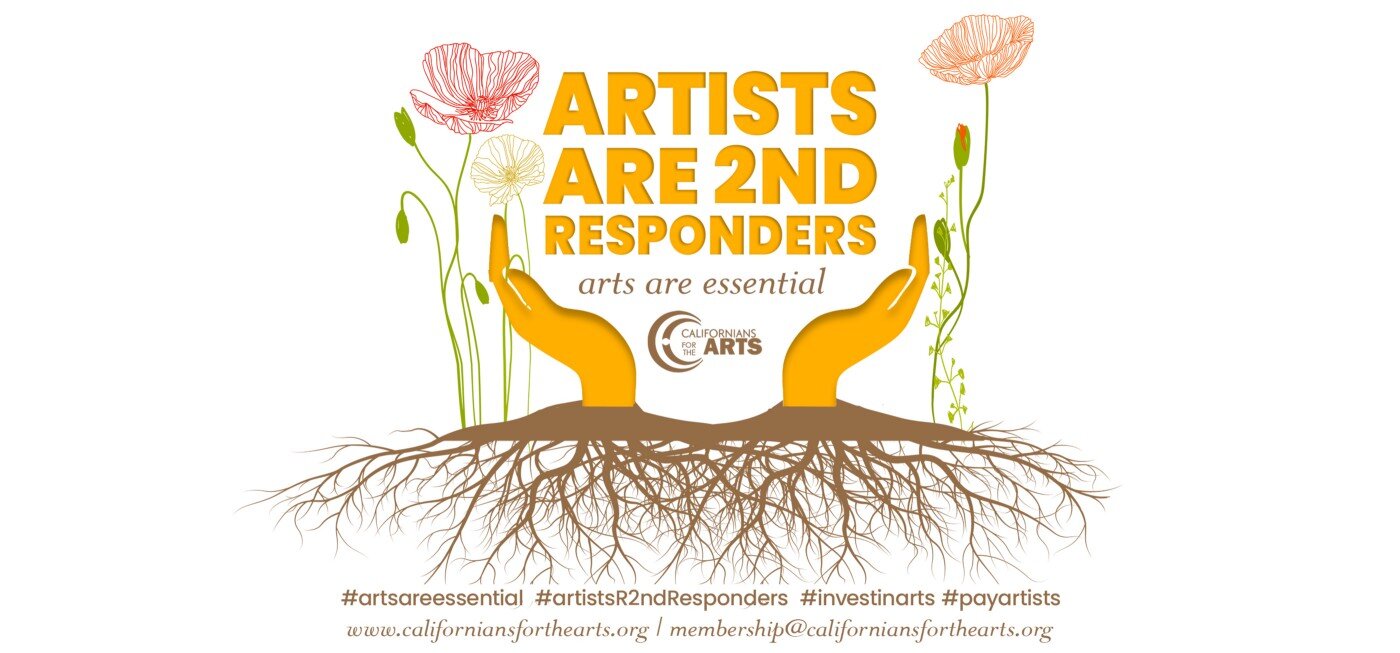Artists are Second Responders, Essential Workers Helping Us Cope and Rebuild
Artists are Second Responders, Essential Workers Helping Us Cope and Rebuild
The COVID-19 crisis makes it even more apparent that under-resourced communities rely on art organizations to act as de-facto crisis management centers: networking, informing, and even distributing food and basic supplies. In Northern California, Tamaira Sandifer, President of Studio T Urban Dance Academy in Sacramento, says the at-risk kids in her program are in extreme survival mode; she offers free hip hop content so they can burn off some steam as they shelter in place. Meanwhile, Sandifer instructs parents and caregivers on how to access food and apply for unemployment.
In Southern California, Plaza de la Raza in Los Angeles provides online counseling in Spanish so the local Latino community can access services, food, and information regarding COVID-19. All across the state, community arts centers, particularly in communities where resources are least available, are providing a nexus of hope, help, and healing. Our neighborhoods see these organizations as trusted partners.
Access to the arts will help us survive and overcome the pandemic, and as we emerge from the crisis, we will be a changed society. Artists are vital second responders. In disasters such as Sonoma and Paradise, Houston and New Orleans, the arts fortified the souls and minds of people with the familiar hallmarks of their own culture and identity. Expressions of affirmation and triumph, heartfelt grief, newfound insight and wisdom — it’s creativity that gives us purpose and determination to go on. First responders save lives; second responders help put people’s lives back together. Artists are essential workers in our society and our economy, helping us recover, reflect, and rebuild.
The innate creativity of our human experience is at its best when we are at our worst. Witness the people of Italy, singing opera to each other from their balconies every night. Witness the explosion of social media poetry readings, musical concerts by virtuosos, and the gifted neighborhood kid. Witness videos of impromptu dance and silly humor created by families playing together, being together, even in isolation. Humans must create in order to be fully human. It’s who we are at our best.
As venues, concerts, schools, dance performances, theaters, festivals, and museums closed, artists and cultural organizations sprang into action providing free lessons to confused and homebound children, their parents suddenly thrust into the role of homeschool teacher. Major institutions such as the Getty Museum offered their entire archives free online, and the public has consumed it at record rates. This outpouring of human spirit, feeding academic intellectual, and creative appetites, has been remarkable. Art has been one of our most vital sanity tools during this crisis.
And yet despite its multi-layered value, the creative sector still fights to be recognized. In 2019, the creative economy generated $650.3 billion, but that output depends on long-term investment in cultural, arts, and non-profit organizations.
Every arts and culture community in California is suffering devastating economic losses without the ability to gather. They are all in need of emergency relief as the first to close and likely the last to open to full capacity. COVID-19’s long-term impact on our state will be multi-fold; loss of life and chronic health conditions, closure of businesses, and escalating unemployment that will destabilize working families. Extended periods of isolation will take their toll. Getting the engine going again will require ingenuity. Our arts and cultural institutions must remain in order for us to revitalize our communities. We are a keystone in our state’s economy, identity, and social fabric.
As budget dollars shrink, state and local lawmakers have tough decisions to make. Investment in the arts should be part of the long-term strategy to deal with aftermath of the pandemic. The arts sector offers resourcefulness and innovation — we are problem solvers with a unique ability to stretch a dollar. We are ready to provide support and services to rebuild California. We can integrate skilled creative workers into municipal government and statewide infrastructure programs, provide employment training and mentorships and develop innovative strategies to utilize venues and performers until we can gather safely again.
And once we are able to gather, we know that the arts will be the electricity that fills our restaurants, hotels, and theaters to capacity, reigniting communities across California. In a recent webinar for Arts Advocacy Day presented by Californians for the Arts, Assemblymember Sydney Kamlager said, “We need to remind our colleagues who might not come from the art world just how critical the arts are to how we teach, how we train, how we motivate, how many people we hire, and the revenues that we create through this amazing sector.”
Supporting the arts now is support for immediate social services in our most vulnerable communities and investment in long-game economic recovery. We need to keep the state arts agency, the California Arts Council budget at its current funding level and give arts nonprofits contracts for essential services delivery. We need to pay our second responders as skilled labor accordingly and create pathways to tap our underutilized human resources. We need to see the arts and culture sector represented in our recovery task forces to explore these solutions.
“The arts are essential to our entire way of life,” Kamlager said. “When we don’t have answers, somehow or another, the arts provide us the pathway to the answers, or the opportunity to reflect on what’s happening so we can find those answers ourselves.”
As the only comprehensive, multidisciplinary non-profit organization focused on advancing and building public awareness of the value and impact of arts, culture, and creativity across the state, Californians for the Arts fights for arts resources and policies that benefit our members and all residents. We hope you will join us in celebrating and recognizing artists as our second responders. Art heals. Arts are essential.
